The Coach House & Stables: Five Things to Spot
Now the ‘Rising’; development is open and in full swing, here are five interesting features to spot around The Coach House and Stables, from collection items which played a role in the history of the castle, to new creations produced by local businesses.
- The Map Table
Taking centre stage in the middle of the Coach House, this installation combines local craftsmanship with creative animation to highlight the impressive landscapes of the Raby Estate.
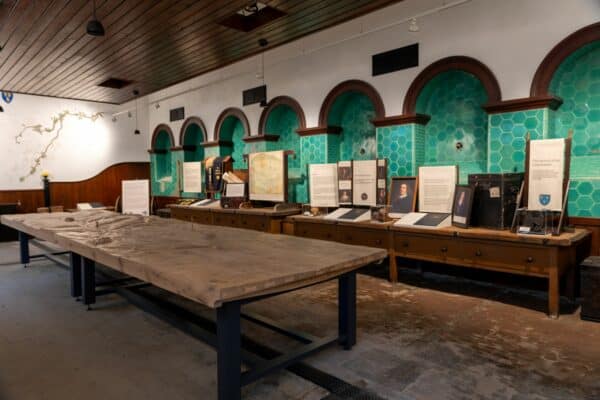
The table itself is made from Raby Estate wood, which has been formed into the contours of the hills, rivers and villages seen from Gainford to Upper Teesdale, by Anthony Nixon of Barnard Castle. Nixon’s are a local furniture company, and their appreciation for the area is evident in even the smallest bridges being included on the River Tees, and a little lead miner hidden in the form of High Force Waterfall.

The projected filmscape, created with the help of AV company Heritage Interactive, shows the seasons passing throughout the estate alongside the familiar voice of Matt Baker providing a gentle introduction to the heritage landscape. The colours and features on the map reflect the changing seasons, including a tractor harvesting in a field in Autumn and purple heather blanketing the moors in summer. The hanging speakers offer different soundscapes in each part of the estate, from the rutting deer around Raby Castle, to the Black Grouse Lek in Teesdale. Each spot on the table tells a different story and shows how varied the landscapes of the Raby Estate can be.
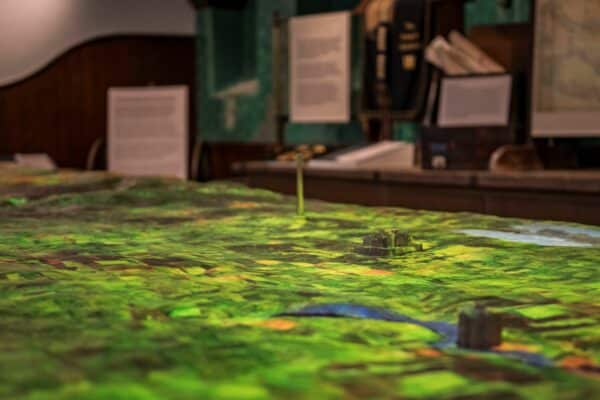
2. Heirlooms Chests
Around the edges of the Coach House is a display providing a brief introduction to the history of Raby Castle. The story is told on canvas hanging from items found around the castle, which have been conserved and repurposed for their new role in the exhibit.
The large boxes, labelled as specifically numbered ‘Heirlooms Chests,’ were historically used by the Vane family to store and move items between Raby Castle and their London homes. Labels still attached to the boxes show their transportation between stations in the local area and King’s Cross, and their interiors show the unique shapes of the items they were created specifically for such as cutlery, candelabras and trophies. These boxes thread throughout the display as we travel through the history of the Neville and Vane families who owned the castle.

- Quotes in the lobby
Within the lobby of the Coach House, dotted around the walls of the Coach House shop, are hand-painted quotes by Edinburgh Illustrator Lucy Roscoe. These are comments left by guests of the family in the Raby Castle Visitor Books held in the collection. Writers were encouraged to leave creative contributions such as a sketch, photograph or poem, and many were wowed by the splendour of their visit and the warm welcome received by the family.
Lucy is also responsible for the illustrations, family trees and other signs scattered around the Rising and the Castle. See our blog on ‘Parker and Millard’ to find out the story behind our characters in the Round House.


4. Pony Boy coat
The Tack Room has been displayed as it was historically, with a range of reigns and saddles hanging from the wood-panelled walls, a bit cabinet, and a table covered in items relating to horse management and riding.
A Coachman’s tan coat is positioned on the mannequin while a smaller version of the coat is draped across the table. Using the name on the label inside, we have discovered in wage records that this was for a Pony Boy called Cleasby Lowson, who worked at Raby from around 1915 to 1917.
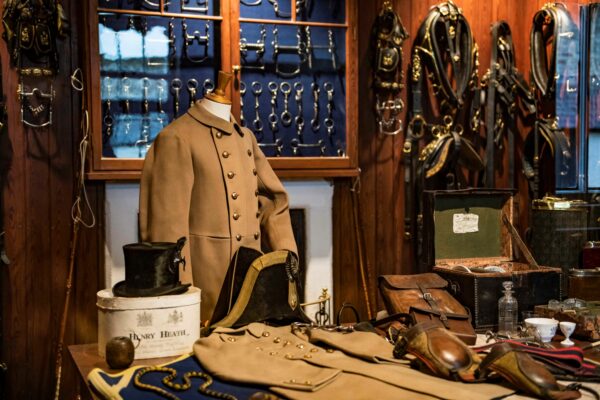
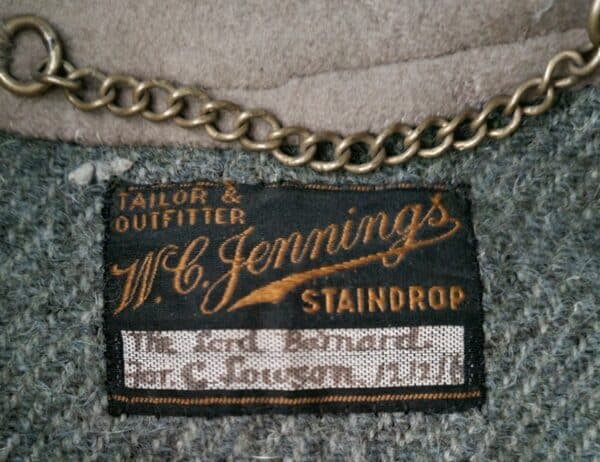
This image of a young man tending to the 9th Lady Barnard’s donkey, in a similar coat in 1897, suggests their role wasn’t limited to caring just for ponies as the name suggests!
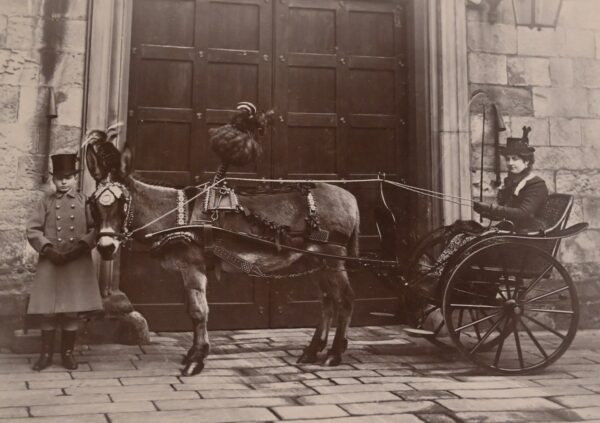
- Ladder in the Vinery
While not actually located in the Coach House and Stables, our final feature to spot is a prime example of an historic Raby item given a new lease of life. The impressive ladder hanging along the length of our new Vinery café was previously stored across one of the outbuildings used to service the castle, and while well-made, was in a dilapidated condition.
It took five people to carry the ladder to the castle, where our Conservation Officer cleaned and waxed all 43 rungs, before it found a new home displayed along the Vinery wall.
For a closer look into more of the items around the Rising, see our blogs on the pony cart hanging in the lobby, a side saddle found in the stables, and some tiles which have found their way back into a food preparation area after years in storage.



